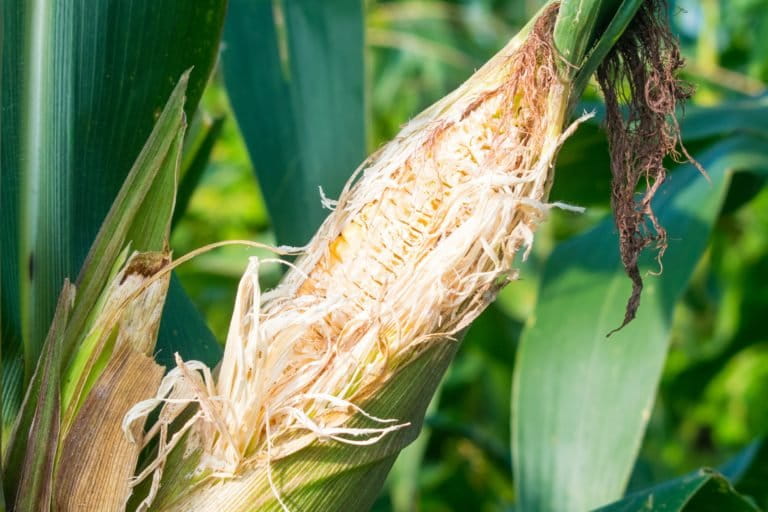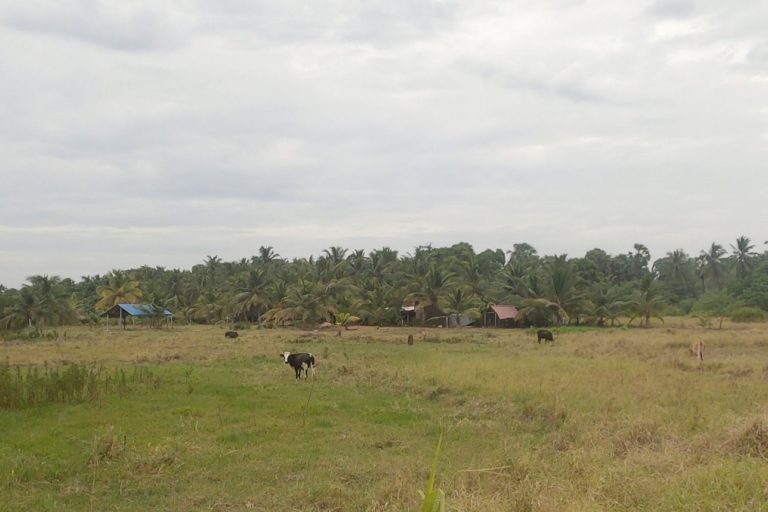Managing risk: How Sri Lankan farmers address climate threats
Smallholder farmers in Sri Lanka face increasing risks due to climate change. To address these challenges, many traditional methods, as well as technology and modern knowledge, offer a range of tools that can prove very effective when holistic risk management is applied.
- Sri Lanka’s smallholder farmers are faced with increasing risks related to the impacts of climate change, which threaten their agricultural yields and livelihoods.
- Risk has always been a factor for farmers, and there are many traditional methods of risk management that have been developed over generations, including cultivation techniques, crop varieties, cascade tank systems, soil management, natural insect and pest control, integrated crop-livestock systems, and livelihood diversification.
- In addition to employing these traditional methods, farmers can benefit from technology and modern knowledge to better manage their risks on different levels, such as agro-meteorological advisory, climate projections, crop insurance schemes, value addition, micro-irrigation, mechanization, or reduction of post-harvest losses.
- Holistic risk management includes these actions as well as policy processes and the creation of an enabling and supporting environment that takes into account the needs and capacities of different actors within the agricultural supply and value chain.
With every passing year, the impacts of climate change are becoming more serious and frequent in Sri Lanka, according to experts, officials, and the affected communities on the ground.
“Sri Lanka is one of the most vulnerable countries in the world to climate change,” says Sunimal Jayathunga, additional secretary to the island’s Ministry of Environment. “The country is experiencing major adverse impacts such as prolonged droughts in the dry zone, flash floods in the wet zone and lowlands, landslides in the highlands, and sea level rise along the coastline.”
These erratic weather patterns are being particularly felt in Sri Lanka’s agriculture sector and among farming communities, who are increasingly exposed to climate-related risks.
“Due to floods, our crops were destroyed for several years,” says Ekanayake, a smallholder farmer from Trincomalee district in the island’s east, echoing similar stories from across Sri Lanka’s farming communities. “Due to drought, the fields did not bring much harvest this year. We are not sure if it will rain at the right time, and we are suffering from pests and diseases as well.”
Ranjith Punyawardena, chairman of the National Steering Committee on Climate Change Adaptation and one of the leading experts on agriculture in the country, said: “The first and foremost impact of climate change on agriculture is reduced yield caused by drought conditions, flood conditions, temperature stress, pests and diseases, and reduced soil fertility.”
Farmers are no longer able to rely on their harvests and plan with certainty. For example, with climate change, even dry months such as February sometimes see rain, which can destroy harvests for crops that require extended and uninterrupted dry spells. Most smallholder farmers in the country, who have an average plot size of less than 2 hectares (5 acres), encounter climate change as an increasingly severe threat to their livelihoods. They face risks of unseasonal excess rainfall, water scarcity, extreme weather events, and other short- and long-term impacts that can ruin their crops or greatly diminish their yields. If they take out loans to buy seeds, fertilizers and equipment, they are in danger of falling into a poverty trap if the harvest fails. If they do not invest in their cultivation, they have no income.

Integrated crop-livestock systems are a way to mitigate and manage climate risk. Image courtesy of SLYCAN Trust.
CLIMATE RISK AND MANAGEMENT
The term “risk,” in the broadest sense, describes impacts that may or may not occur. These impacts have the potential to negatively affect people, property, livelihoods, and other valued goods. Risk is not simply external but rather emerges from the interplay of hazards, exposure, vulnerabilities, and lack of adaptive and coping capacities.
Sri Lanka’s agriculture sector is no stranger to risk. It faces disaster risk linked to extreme and sudden-onset events like floods or landslides; market risk, which stems from potential mismatches between supply and demand; and climate risk, which is related to the above-mentioned impacts on yields and agricultural livelihoods, as well as on the health, lives, infrastructure, and development efforts of rural communities.
Surveys in agricultural areas suggest that even if farmers are not familiar with climate change as a technical concept, they are well aware of its impacts to their cultivation.
“The majority of farmers know that something is going wrong around them,” Punyawardena says. “However, probably only 30-40% of them are really aware of climate change.”
In any case, awareness of risk is only the first step to managing them. Risk can be addressed in different ways and on different levels. The elements of a comprehensive risk management strategy—risk assessment, risk prevention, risk reduction, risk transfer, and risk retention—can, for instance, focus on reducing vulnerabilities, reducing exposure, building adaptive capacities, or pooling risk across a larger group of stakeholders, such as farmers’ societies or community groups.
Farmers in Sri Lanka have dealt with risk to their cultivation since time immemorial, owing to the inherent uncertainties and fluctuations of weather, plant growth, the environment, and market factors. Climate change is rendering these risks more unpredictable and severe, but many of the traditional techniques developed over generations can still prove useful alongside more modern techniques and technology.

Pests and diseases such as the fall armyworm are more common due to climate change can have devastating impacts on crop cultivation. Image courtesy of Ashan Karunananda.
RISK MANAGEMENT AMONG FARMING COMMUNITIES
“To manage risks, farmers look for more tolerant crop varieties and try to use better-quality seed and planting materials,” Punyawardena says. “They look for alternative irrigation sources, more efficient micro irrigation, or rainwater harvesting. Some of them try to switch to organic manure or to more traditional crop varieties and farming systems. As the worst-case scenario, they look for alternative livelihood options.”
Risk management takes many forms, such as restoring the ancient system of tanks — man-made water reservoirs that dot the Sri Lankan countryside — employing natural insect and pest control, reverting to traditional cultivation methods and soil management, and incorporating modern knowledge of integrated plant-nutrient systems, integrated pest management, regenerative agriculture, or climate-smart agriculture.
Risk can be addressed at different stages, not just when it comes to cultivation. One way to balance losses in yield is to reduce post-harvest losses and food waste, currently at 30-40%. Another option is livelihood diversification through non-agricultural side businesses or integrated crop-livestock systems, as livestock is less sensitive to weather anomalies and can provide an additional income source when crop cultivation fails. Farmers can diversify their crops and practice intercropping, strengthen community organization, and share risks through common funds and crop insurance schemes, such as the one run by the government’s Agriculture and Agrarian Insurance Board.
“Farmers should strictly adhere to agro-meteorological advisories and grow crops by looking at the agro-ecological suitability of particular crops for a given geographical region,” Punyawardena says. “They can switch to short-age or more tolerant varieties, switch to perennial fruit crops or inter-season cultivation, and consolidate lands for better cultivation and mechanization. They can also practice value addition to their agricultural produce and invest in better storage and drying facilities through farmer organizations and public-private partnerships.”
Addressing risks to cultivation can make a huge difference. “Due to the farming methods I used four to five years ago, I struggled with pests,” says Rathnayake, another farmer from Trincomalee. “Now, I am cultivating local paddy using traditional methods, and there is very little damage from pests.”

Changes in climate and weather patterns increase the risk to cultivation and make farmers more vulnerable to poverty and loss of livelihoods. Image courtesy of SLYCAN Trust.
Common suggestions for risk management given by farmers include physical interventions like restoring the tanks and canals or improving water management. However, many also say the attitude and relationship to nature play a major role.
“The importance of the environment should be understood, and youth should be mobilized for activities,” says Ranjani, another dry-zone farmer. “This could unite everyone at the village level.”
Community-led initiatives are crucial, but climate risks are too large to be addressed at the community-level alone. Policy processes such as the Overarching Agricultural Policy, the National Climate Change Policy, the National Adaptation Plan, and the Nationally Determined Contributions under the Paris Agreement are key to link actions at the local, national and global levels. In addition to the government, other actors also play vital roles in supporting farming communities, including actors along the supply and value chains, civil society organizations, and private sector entities, for example by engaging in public-private partnerships to enhance and develop crop insurance solutions.
Climate risk interacts with other risks and seriously affects Sri Lanka’s agricultural sector. To address it, risk management needs to be holistic and incorporate all relevant stakeholders, all of their actions, and all levels.